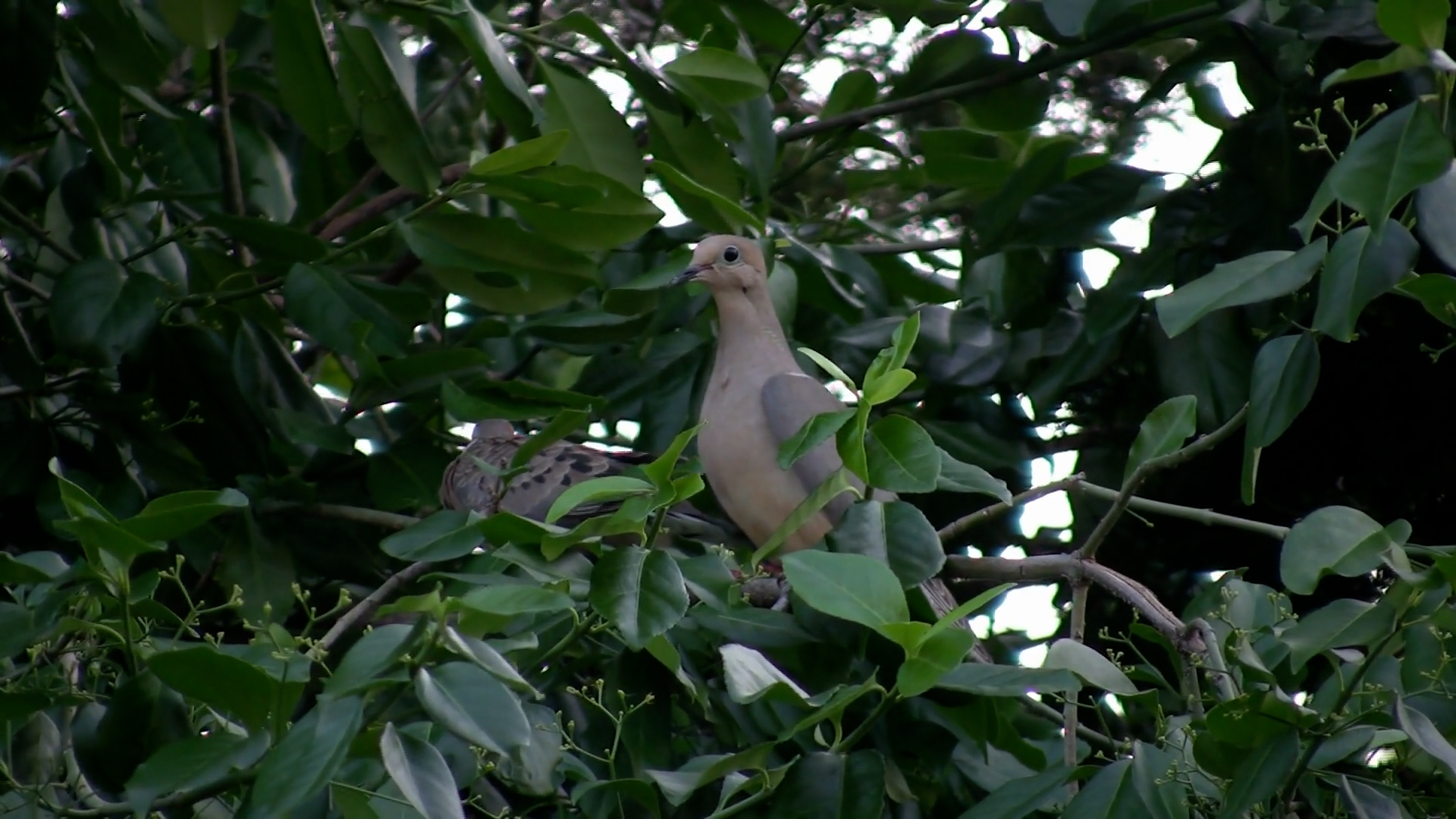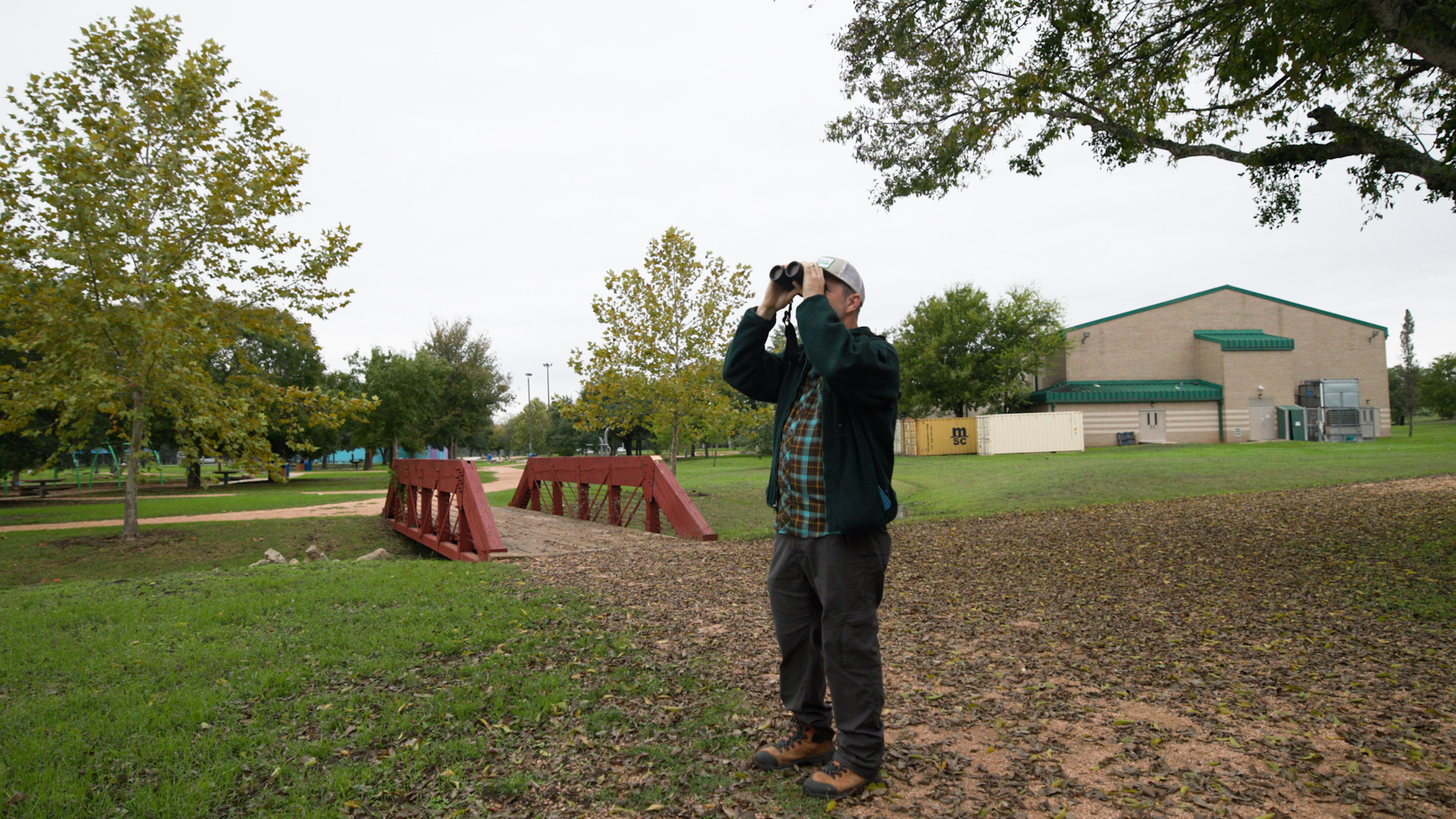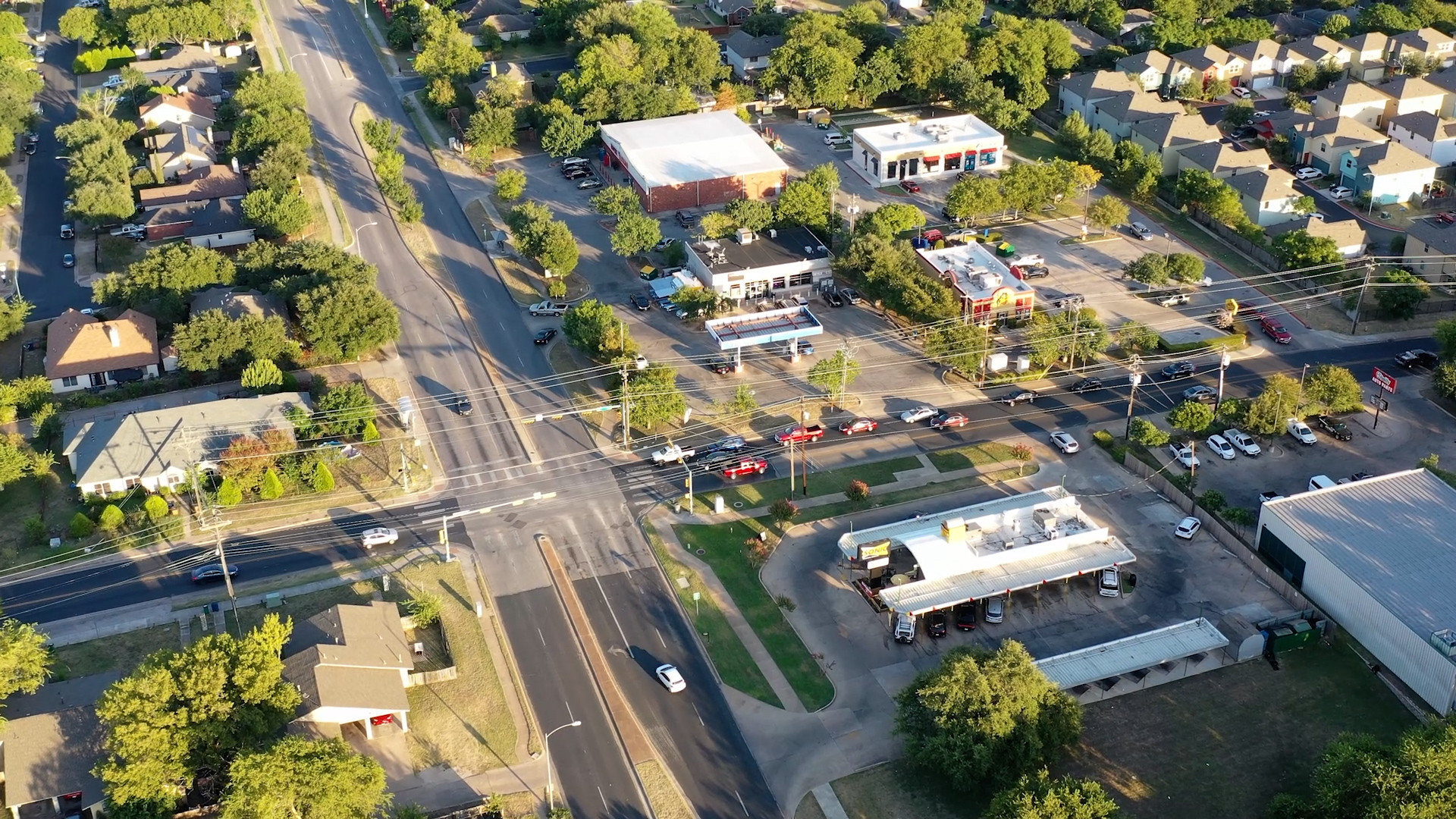Are There Still Doves In Dove Springs?
Ana Aguirre’s home is surrounded by trees and a creek, with her own backyard having a small greenbelt. It’s only fitting that this natural environment resides close to a neighborhood named Dove Springs. When she first moved to the area, Aguirre noticed the large population of doves living around her home.
“They would just perch themselves on the trees,” Aguirre said. “When I'd walk out, they would in mass fly off.”
Developers often name new subdivisions after natural features in the area. When the neighborhood was built in the 70’s, they took inspiration from nature-and from the moniker given to the area by previous residents–and named the subdivisions Dove Springs. But some of these natural features might be updating.
A mourning dove perches in a tree.
“We are dealing with a lot of different changes, whether it's continued development, and that's going to continue to have an impact on the natural resources in and around the city,” said Richard Kostecke, a conservation biologist and ornithologist.
Also Travis Audubon board member, Kostecke holds a wider knowledge of birds than most people. He said Dove Springs was most likely named for the mourning dove’s large population in the neighborhood and that they are widespread across the U.S. and most of Texas. The morning doves’ basic needs of food, water and cover would have been met in the neighborhood’s open areas before changes to the landscape were made.
“It should have been a really good place for doves,” Kostecke said. “They could go out into the open areas and feed on seeds. They could come back to the springs for water. They could go to the trees.”
Richard Kostecke looks through his binoculars at a flock of birds in the Dove Springs District Park.
Even inspiring the neighborhood name doesn't save these doves from being pushed out. Due to the evolving habitat, Kostecke said the mourning doves can’t take advantage of newer resources quite as well as other species.
“You can find them around, but they're much, much fewer than they would have been historically within the Austin City limits,” Kostecke said.”
As Eurasian collared doves as well as white winged doves from Mexico and South Texas moved in, the mourning doves moved out. Kostecke said these newer doves are better suited for an urban environment as opposed to the mourning dove, which thrives in rural areas. Factors such as the heat island effect making the area hotter and the newer doves’ bigger size point to the mourning doves flying to new territories.
“These newly arrived white winged doves are taking advantage of food resources,” Kostecke said. “Kind of like the grackles, [finding] French fries in the parking lot or McDonald's, that sort of thing.”
Changes have made Austin a better habitat for some animals instead of others, and that goes for people too. Housing costs have gone up and rent is up, making it difficult to manage if you live in a house, an apartment or something smaller. Though home prices decreased this year, the average cost for a home is still over 500,000 dollars.
An aerial view of Dove Springs.
Aguirre has seen how development has also changed the local environment.
“We have a lot of springs,” Aguirre said. “Unfortunately some of them have been destroyed just because of development and growth in the community.”
Because the landscape will continue to evolve over time, Kostecke said people and wildlife must adapt.
“There’s going to be advantages to some species and other species may end up declining because their habitat is gone or they can't take advantage of the resources quite as well as some of the other species,” Kostecke said. “There will be continued change.”
Community journalism doesn’t happen without community support.
Got story ideas, advice on how we can improve our reporting or just want to know more about what we do? Reach out to us at news@klru.org.
And if you value this type of reporting, then please consider making a donation to Austin PBS. Your gift makes the quality journalism done by the Decibel team possible. Thank you for your contribution.
More in Science & Technology :
See all Science & Technology posts








Contact Us
Email us at news@klru.org